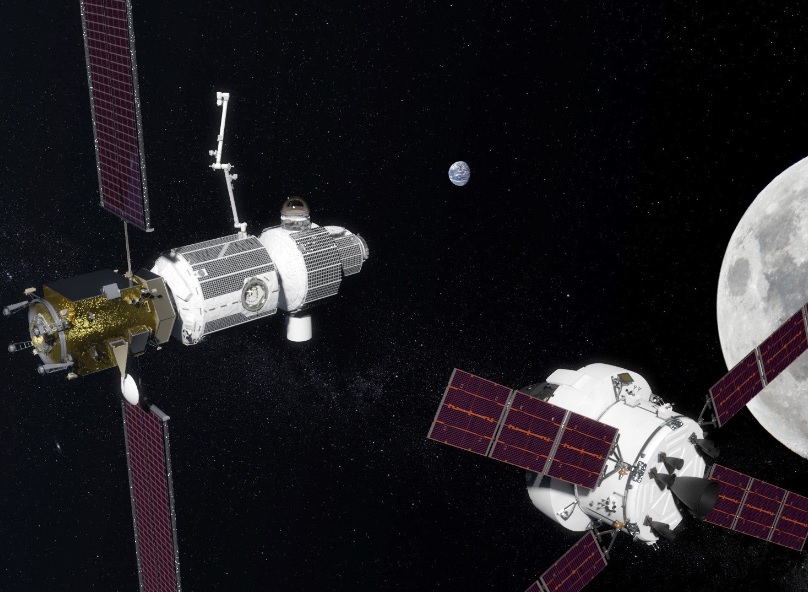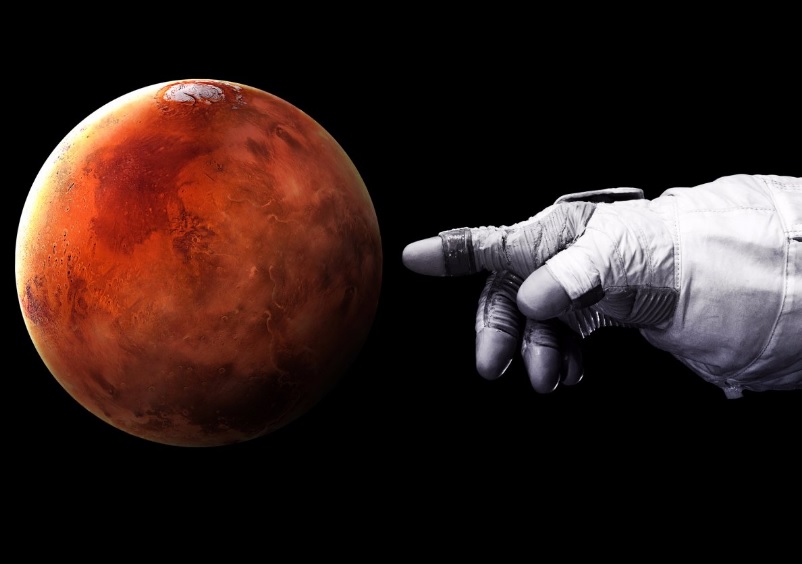For years, NASA has promised to send people to Mars on its new huge Space Launch System (SLS) and the new Orion spacecraft. However, about the same amount of time from the agency could not clarify the details of how it plans to use rocket and space equipment worth 40 billion dollars and do what no one has ever done. The situation did not clear up even after the publication of the NASA 36-page report on the development of Mars in October 2015. And finally came the day when concrete figures and dates began to appear in this project.
It all began on March 21, when US President Donald Trump signed a new decree, according to which NASA should deliver people to Mars by 2033. A week later, the space agency published the most detailed report on sending a person to Mars.
It should be noted that the report is clearly not designed for people suffering from claustrophobia, as well as nervous. Astronauts who agree to go to the Red Planet will have to spend three long years on board the locked cannon without any chance of an emergency termination of the mission once the device has crossed the Moon’s orbit. Moreover, the plan implies only the orbital flight of Mars. Landings on the surface of our neighbor is not planned.
At least it becomes clear from the document presented by William Gerstenmeier, the deputy head of NASA on manned space operations. With the report, Gerstenmaier spoke at a meeting of the advisory council of the aerospace agency on March 28.
“NASA continues to take active steps in the development of outer space. The Moon is planning to begin the construction and testing of systems necessary for future and even more ambitious missions to the far space, including a manned flight to Mars, “the US space agency said in a press release.

Artistic representation of the lunar orbital station NASA Deep Space Gateway (left)
The edition of Ars Technica got acquainted with this document and decided to bring brief extracts from it. So, Gerstenmaier’s program on manned flight to Mars consists of five stages:
Phase 0
Includes the use of the International Space Station “as a testing platform for testing and demonstrating key technologies for research operations, as well as attracting interest in its commercial use” by companies such as SpaceX, Boeing, Orbital ATK and others. At the moment the program is in this phase.
Phase 1
Conducting six space launches in the period from 2018 to 2025. First, NASA needs to conduct an inaugural launch of the SLS (a 98-meter rocket that will be a modern replacement for the heavy Saturn-5 rocket used in the Apollo space missions to deliver astronauts to the moon). Considering that the first launch of the SLS is also planned to conduct the first field tests of the Orion spacecraft, the agency plans to conduct five additional launches of SLS after this.
One of five of these launches will mark the beginning of the Europa Clipper mission – sending a space probe to Jupiter. The device will study the gas giant and its ice satellite with the ocean hidden beneath the ice, where extraterrestrial life is expected.
Within the four remaining launches, parts of the new space station Deep Space Gateway (DSG) will be delivered to the Moon’s orbit. Assistance in the installation and maintenance of the station will be provided by crews of astronauts of four.
“The station DSG is considering the possibility of its transfer to a fully autonomous, robotic operation mode, and manned. In the latter case, the station can be used for manned missions to the surface of the Moon, as well as for orbital support for other missions within the solar system, “Gerstenmaier said in a press release.
Phase 2

Artistic representation of NASA’s Deep Space Transport (right)
Phase 2 will be completed by the construction of the lunar orbiting space station and the launch of the Deep Space Transport (DST) transport spacecraft by 2027. Then, in 2028-2029, four lucky astronauts will start the mission on a long (up to 400 days) stay at the station, being in a 41-ton residential orbital lunar module. The purpose of their mission will be to verify the performance of all DST systems.
Phase 3
Phase 3 will start somewhere by 2030, with the account that the crew of the lunar station, as well as the DST transport ship, will not have any problems requiring changes in the plan. After this, two more launches of SLS rocket will be made. As part of the first launch, a new supply and fuel will be delivered to the lunar station. In the second – four astronauts. The first Martian crew.
As part of their two-three-year flight to the Red Planet, “it is likely that a gravitational maneuver will be performed with the help of Venus, after which a short-term stay in orbit of Mars will follow.” At the same time “after leaving the space near the moon, the crew will not have any hope of an emergency termination of the mission and an emergency return home,” adds Ars Technica.
Phase 4
The implementation of “Phase 4” is planned after 2033 and at the moment is explained very vaguely. In it, perhaps, it is possible to single out the “development and preparation of a robotic mission” for the delivery of infrastructure, equipment and provisions to the surface of the Red Planet, and, in fact, the “first manned landing on Mars”.
Whose boots are the first to step on the surface of Mars?
All this, of course, sounds very interesting. It sounds so good that it’s too much. Especially against the backdrop of the seriously reduced budget allocated to the aerospace agency by the US Congress. It is worth recalling that the total cost of all Apollo missions cost the country more than 4 percent of the total US budget. Today it would be about half a percent. But this is the moon. And we’re talking about Mars. And not only separately about Mars, but also about the construction of the lunar orbital station, from which will be sent to the direction of the Red Planet.
Even if NASA really succeeds in implementing this project, the agency may face competition from private companies, which it, by the way, writes to partners. Who knows, perhaps the private aerospace sector of the US will even be able to overtake NASA for flights to Mars. And to this already there are some prerequisites.
Ilon Mask, the founder of the space company SpaceX, recently talked about plans to send people to Mars by 2022. The company Boeing, which is a direct competitor to SpaceX, is also aimed at the Red Planet. Mask, in turn, said that he does not worry about it at all, because his goal is “only” in the colonization of Mars and protecting humanity from possible extinction on Earth as a result of self-destruction or some fallen giant asteroid.
“The desire to master Mars expressed several sides at once. It’s good. It is very good. In this case, it will be useful to have a reserve or an alternative plan, “Musk said in August 2016.












